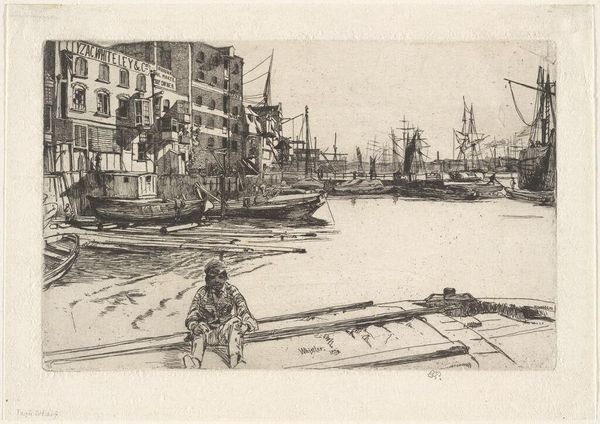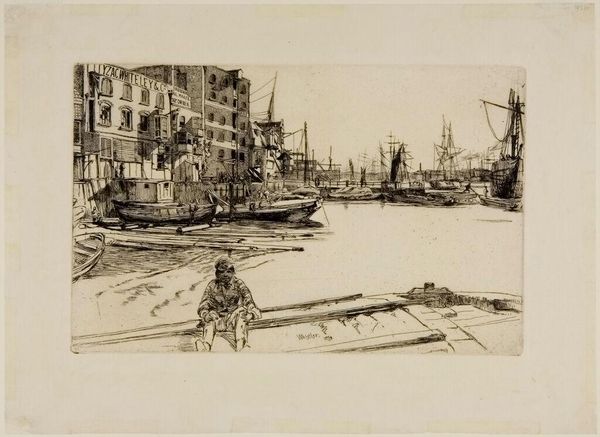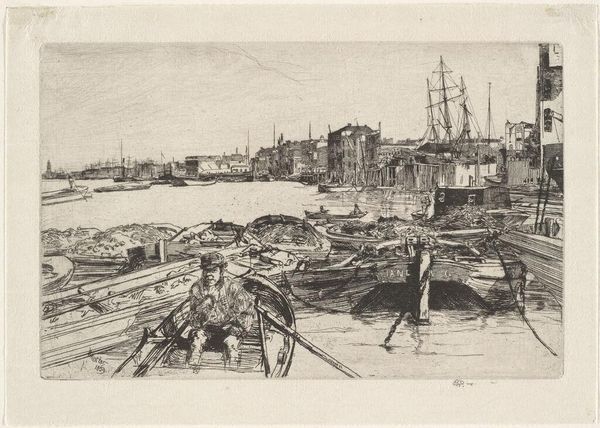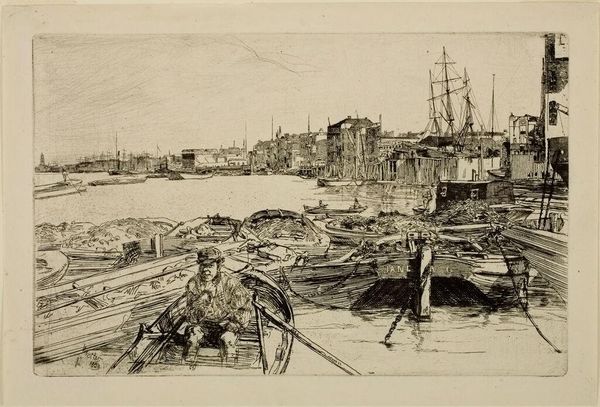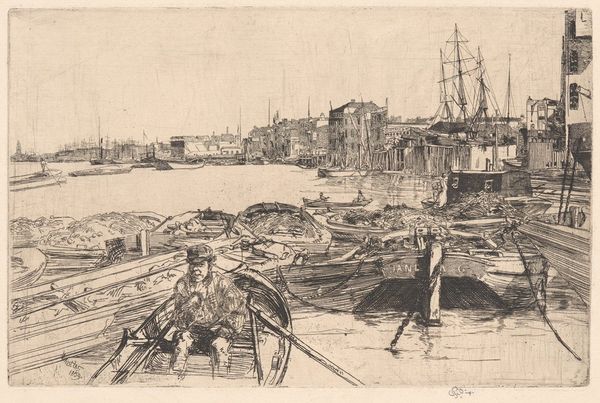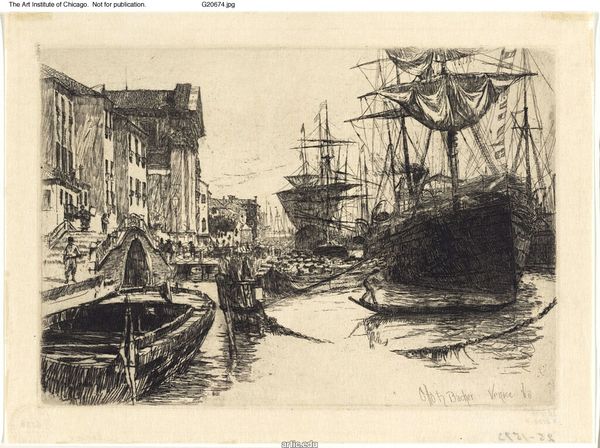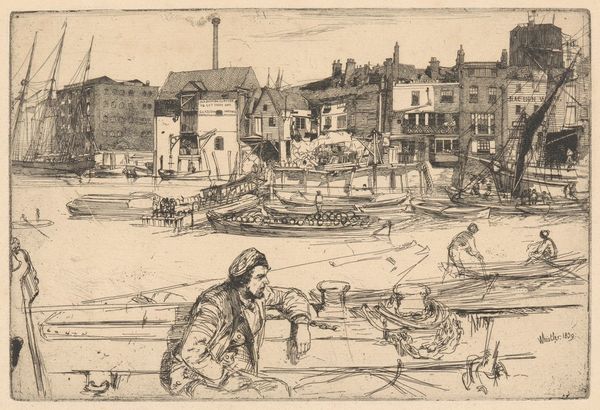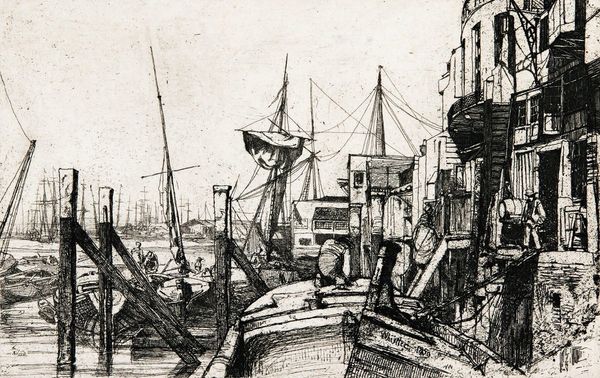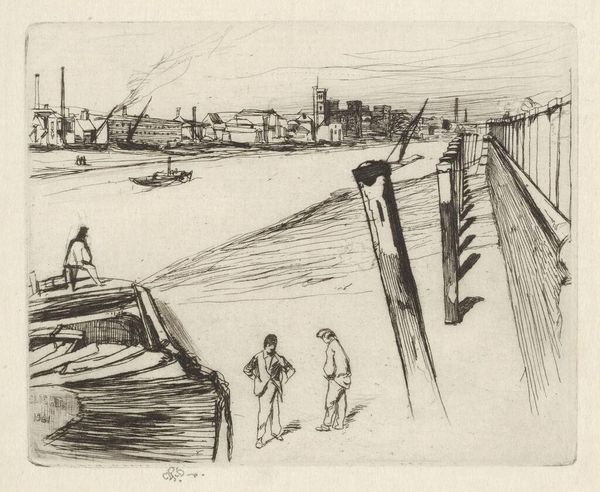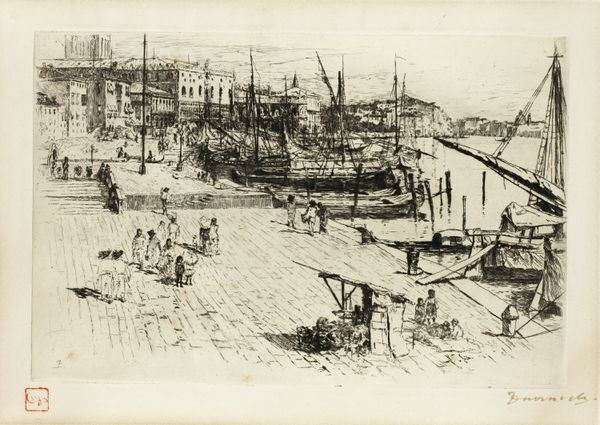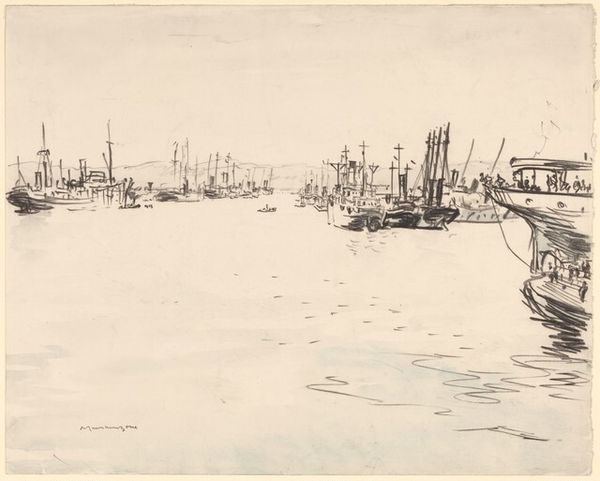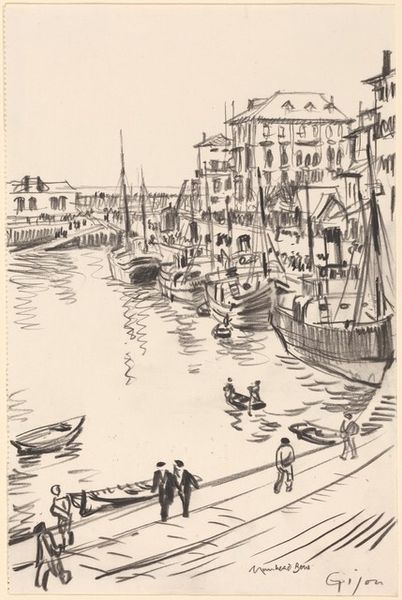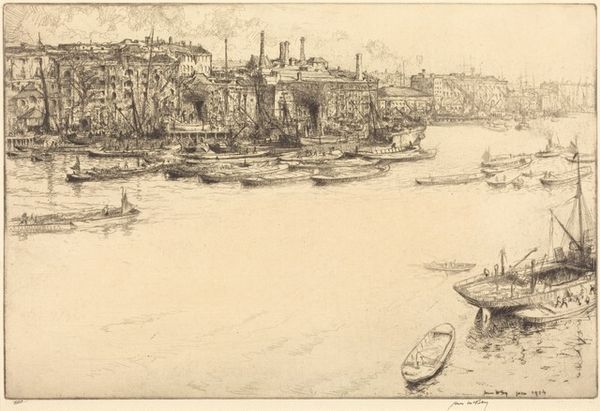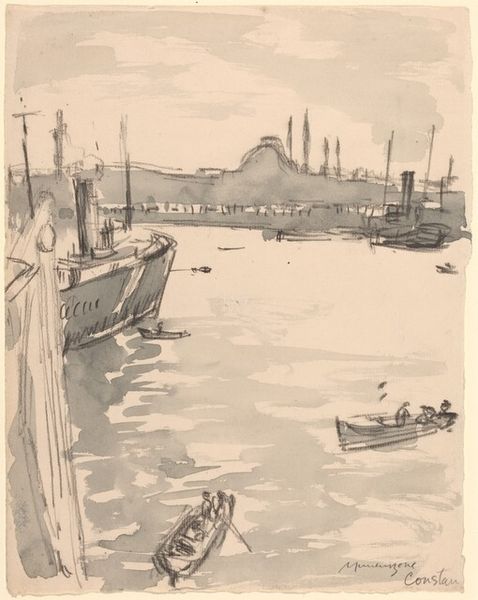
Copyright: Public Domain: Artvee
Curator: Here we have James Abbott McNeill Whistler's "Eagle Wharf," an etching from 1859. Editor: It's… rather gritty, isn’t it? A sort of melancholy hangs over this port scene. All those ships feel almost ghostly in the background. Curator: The atmospheric quality is heightened by the etching process itself. Whistler scratched the image into a metal plate, which was then inked and printed. The fine lines, almost like pencil strokes, lend a sense of immediacy and capture the textures of the urban landscape. Look at the Tyzac Whiteley lettering. Editor: It’s difficult not to consider the social dynamics, isn’t it? Here’s this lone figure, probably a laborer, positioned in the foreground almost as a buffer, a stark contrast to the signs of industrialism in the background and the wealth being transported in those boats. There's something potent about its placement; we almost gaze over him, and at the cost of whom? Curator: Exactly! The print depicts not just the visual aspects of Eagle Wharf but the industrial labor involved in maritime trade, and how structures enabled mercantile industry. Whistler chose his subject with deliberate intent, challenging the separation of fine art from ordinary life by including manual labor. Editor: I agree. There's almost a pre-photography documentation quality to the rendering of class. Are we really considering the implications of free trade? Curator: And that is reflected through Whistler's engagement with materials. The cheapness of prints created access and visibility to larger swathes of Victorian society. The circulation and reprinting in commercial art world, created and influenced markets through accessible material production. Editor: It reminds us to continually question our role as viewers. Curator: So next time you're walking through London, take a moment to consider the weight of its past. Editor: Indeed. What appears picturesque often has roots in very complex economic systems, power relations, and human toil.
Comments
No comments
Be the first to comment and join the conversation on the ultimate creative platform.
